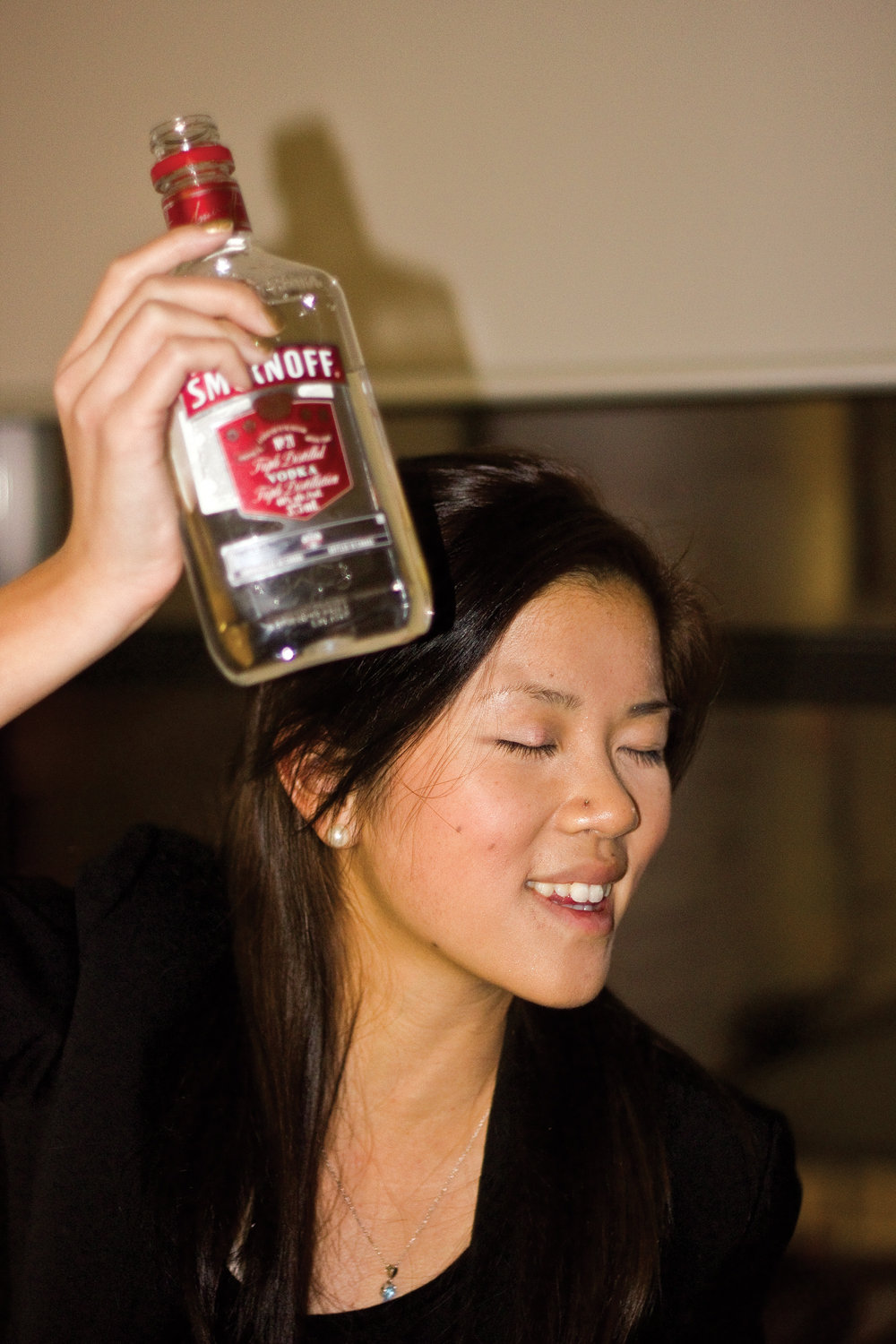A first-person account of surviving a disorder affecting one in five college students
Damian Mangat
Contributor
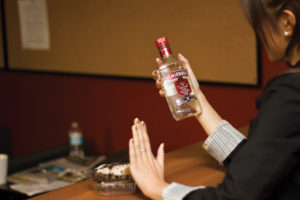
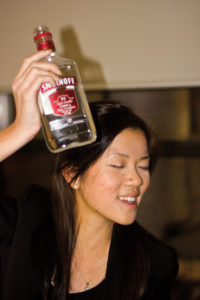

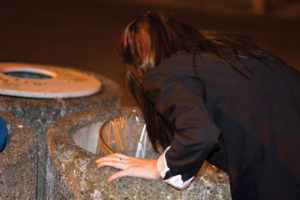
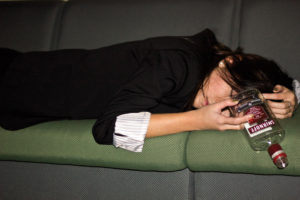
Despite her translucent skin, sunken eyes, and ghostly pallor, the pretty girl seated next to me in the clinic had the lithe figure of Lindsay Lohan. I could pick out her collarbones and trace the thin blue veins through her wrists. The stump of her belly ring caught my eye; I did a double-take. Her bloated abdomen warned of a deeper issue: the girl suffered from drunkorexia, a surprisingly common double-whammy of an eating disorder.
“There are women who are afraid to put a grape in their mouth but have no problem drinking a beer,” said Dr. Douglas Bunnell, director of The Renfrew Centre of Conneticut, in an interview with The New York Times. There are entire sections of websites, such as hercampus.com, devoted to the phenomenon of weight gain in college students, usually during their first semester.
Typically, those extra 15 pounds result from drinking copious amounts of alcohol to deal with stress and environmental factors. But for many students, especially those with pre-existing eating disordered behaviour, the “CWAC” diet (coined in a Maclean’s article as coffee, water, alcohol, and cigarettes) seems like an easy fix.
Valerie Taylor, chief of psychiatry at the Women’s College Hospital in Toronto, spoke to the Globe and Mail about rising alcohol abuse and mental health issues in Canada.
“Schools should address the problem,” she says. “Women are bombarded with lots of images with what’s socially acceptable. They desperately want to not gain weight. If they can only consume so many calories a day […] that’s going to come from alcohol.”
But what does this have to do with you?
The National Eating Disorder Association (NEDA) defines drunkorexia as “replacing food consumption with excessive alcohol and/or using alcohol to induce vomiting as a method of purging and numbing feelings.”
The media is rife with examples of the typical drunkorexic—a college-aged woman who starves all day in order to get drunk at night.
“I don’t feel valued, pretty, or wanted in this world—so why should I value myself?” was the continuous line running through Allyson Nemeth’s head, a postgraduate student at York and survivor of an eating disorder. She is synchronizing her placement with EDOYR (Eating Disorders of York Region).
“From my own experience, drunkorexia or binge purging are a way to cope in a world that is ironically eating away at you,” Nemeth says.
Drunkorexia does not require a severe pre-existing condition. Researchers have found psychological and neural links between eating disorders and substance abuse.
A recent Southeastern University study of first-year college students found that 14 per cent restricted calories before drinking, six per cent of that number doing so in order not to gain weight. A startling 70 per cent were female. According to the CBC, 35 per cent of people with substance abuse issues also have eating disorders.
“At this time of their lives, young people are exploring their independence, a lot of them moving out from home,” explains Flora Svinarenko, a psychotherapist at Therapyheals.ca and EDOYR.
“For some of them, this could be a stressful transition, as even positive change can be difficult. Also, especially for people with eating disorders not having family to help with eating meals, not being monitored and supported when struggling with unhealthy eating habits can be extremely stressful.”
The highest risk group—first-year college students—is commonly triggered by academic stressors, decreased parental supervision, and campus norms promoting freshman drinking. The NEDA discovered that 20 per cent of college students reported disordered eating at some time, primarily females.
Like many drunkorexics, I discovered it by accident. Besides curbing my hunger and boosting my energy, alcohol on an empty stomach drowned out the voice in my head telling me I was fat and unlovable. The image of Kate Moss on the front page of Elle grew blurry, linear, and shapeless. Meanwhile on campus, the parade of keg parties reinforced my new habit.
“I have just turned 20 and over the past […] year discovered that drinking alcohol helps me lose weight,” posted a woman in an online drunkorexia thread.
“Since January, I have lost about seven pounds, drinking alcohol and eating nothing. Not for one minute do I advertise this, I know now that I have both an eating disorder and possibly a drinking problem.”
Drunkorexia initially is a functional coping mechanism, as it deceptively washes out the pressures of university. When really, like a parasite, it feeds off the obsession with being skinny and the social acceptance of drinking.
Like me, many drunkorexics have a perfectionist mentality.
“They can have very high academic expectations from themselves, sometimes unrealistic,” explains Svinarenko. “Fear of being ‘not good enough’ or ‘a failure’ can contribute to enormous amounts of stress and anxiety. At this point, alcohol can bring immediate relief from stress, anxiety, and struggles around food. An eating disorder can bring a false sense of control over one’s life, and alcohol can give a false sense of being in control over eating disorder symptoms.
Because women weigh less, they have fewer metabolizing enzymes and less diluting body water. An appletini on an empty stomach sends alcohol shooting into the system, skyrocketing blood sugar levels. The resulting upheaval in the body’s metabolic process causes serious instability.
Those with disordered eating patterns disintegrate from the inside out. Alcohol consumes their vitamins and nutrients leading to serious health problems such as hypoglycemia, fainting, and cognition impairment. Long-term effects include osteoporosis, brain damage, cirrhosis of the liver, cardiac problems, and death.
The statistics pare down drunkorexics to one out of five college students.
According to the National Institute of Mental Health, those aged 18-24 with eating disorders have the highest rate of death—12 times higher than the average.
“Unfortunately, it can be extremely difficult to see that alcohol does not solve problems, but distracts from them, making the situation even more complicated. These young people are not only struggling with their eating disorder anymore, but are dealing with alcohol addiction problems as well,” says Svinarenko.
Considering women use drunkorexia to improve their appearance, the consequent anemic pallor, brittle nails and hair, dizzy spells, constipation, bloating, and acne breakouts are tragically ironic.
According to Amelia Perri, an eating disorder client turned psychotherapist, the most invasive problems are invisible to the naked eye, making it difficult to identify a fellow drunkorexic. Like bulimics, drunkorexics usually maintain a normal weight; the calories from the alcohol diet prevent weight loss. An average beer contains 150 calories compared to 70 in a shot of hard liquor such as vodka, gin, or rum.
The Canadian Food Guide recommends approximately 2,000 calories for women and 2,600 for men per day. Unlike vitamin, mineral, and nutrient food choices, alcohol converts to sugar, then carbohydrates, and ultimately, to fat. Several obvious symptoms of the typical drunkorexic include restricting food intake, becoming obsessive about eating or appearance, or rapid weight loss.
In the humble meeting rooms of EDOYR, Perri, Svinarenko, Nemeth, and clinical director Janice Morgante offer support, hope, and education for women towards the early detection and prevention of sub-clinical disordered eating. The grassroots organization finances its philanthropic work through galas, auctions, book sales, and community events such as the upcoming performance of Joseph and the Technicolor Dreamcoat at the Richmond Hill Performing Arts Centre.
Similarly, disability and counseling services at York promotes student-centred behavior change while screening for interventions. Therapeutic techniques specifically geared towards drunkorexics include CBT (cognitive behavioural therapy), and narrative and emotion focused therapy both individually and in groups. Through continued research and application, counsellors promote self-awareness, healthy eating, and responsible drinking on and off campus.
“Both disorders are behaviours that are glorified and reinforced,” says Dr. Bunnell. “Binge drinking is almost cool and hip, and losing weight and being thin is a cultural imperative for young women—mixing both is not surprising, and it has reached a tipping point in terms of awareness.”
Through her placement at EDOYR, Nemeth addresses not only eating disorders but also the larger structural causes behind them.
“I want everyone, specifically females, to know that they have a right to honour themselves and put themselves before anyone else,” says Nemeth.
“I might be speaking from an idealistic place, but I don’t think it is impossible. I do not believe that is the message they receive enough, whether it
be through media and even political representations.”
The line between anorexia and alcoholism is not only fine but also fragile. The body and mind begin to ooze a colourless liquid with the illusion of sweetness and the force of firewater. It is not easy to return from that murky pool. I can tell you because I have been there—my yoga mat in one hand, a bottle of Grey Goose vodka in the other.


